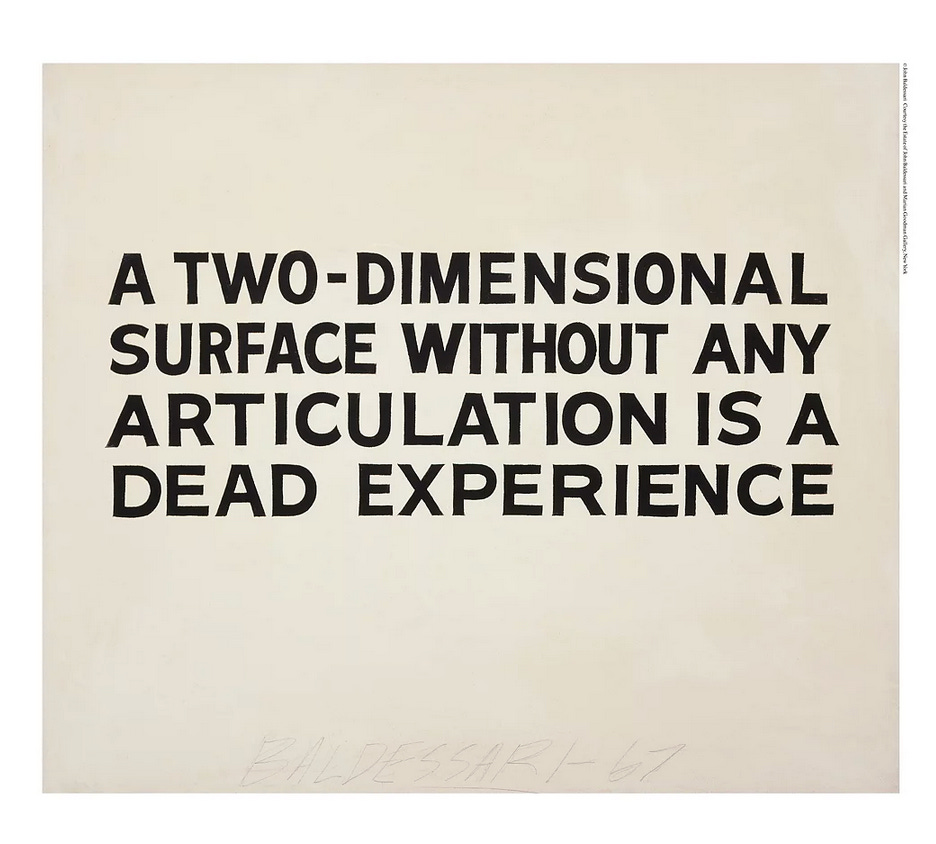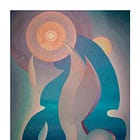The other day, I was sitting across from a friend, helping her work through a work predicament—predicament might not be the right word, actually, as she was really trying to architect a mission and values statement for herself. Who is she? What’s her purpose? What does she stand for in the world? When you look at her work and what she’s created in the world, what does it ladder up to?

Helping people understand who they are by where they’ve been and what they’ve made is one of the things people pay me for—it’s the crux of what makes me a good ghostwriter and collaborator, for one, as well as a good brand builder. Not only can I read the tea leaves of culture, but I’m skilled at understanding what a person or business represents in the world: What it means, for one, and how that should be translated and expressed.
I can do this for people because of the power of triangulation: I get to observe them (or the brand) in the world and they get to tell me how they think and feel; then I get to process the information, take in the wider frame (including all their blind spots and what they cannot see) and then reflect it back to them more fully.
The funny thing—maybe the obvious thing—though is that I can’t do this for myself. Or not really, never in the moment. My workaround is to make a bunch of stuff—newsletters, podcast episodes, articles, Instagram videos, and books—and see what it adds up to in the rear-view mirror, all with the help of some space and distance. The perspective of time functions as a quasi-third force, so you can look at your work with a less impassioned, less enmeshed and immersed point-of-view.
For anyone going it alone in their job or creative mission, anyone who doesn’t have a colleague, coach, boss, or creative collaborator who can reflect their work back to them, this is my best advice: If you’re going it alone, and really trying to figure out what you’re trying to do and what you’re about, you need to do whatever “it” is for awhile before you can see what you’re doing with any clarity. Only your future self can offer a more honest, more expansive perspective. In many ways, you need to let the unconscious, the irrational, the drawn-here-for-no-discernible-reason part of you lead, to do what it wants to do and make what it wants to make.
This is the crux of personal development work too. The role of a wonderful therapist is to let you spin your stories, to let your unconscious run unchecked, and then reflect it back to you in a way in which you can process the information for your growth. You need this triangulation in order to get perspective on your own behavior. After all, one of the tenets of shadow work in the Jungian sense is that you can’t see what’s in your unconscious—it’s not conscious!—you don’t know what’s in your blind spot. But a trusted therapist, or a wonderful friend, might be able to point you toward what you’re missing. If you’re willing to take a look-see, real change is possible.
If you don’t have a therapist, or a trusted friend or confidante, there are ways to do this work with yourself. You need to get your unconscious running—often through writing—to see what thought patterns and old stories you’ve been committed to. This is the crux of Choosing Wholeness Over Goodness, which is the companion workbook to my book On Our Best Behavior. The foundational tool is from Conscious Leadership Group, and it’s called Fact vs. Story. The idea is that we can take one foundational fact—irrefutable and recordable on video—and then generate a million stories about that fact.
The co-founders of Conscious Leadership Group, Diana Chapman and Jim Dethmer wrote a book called The 15 Commitments of Conscious Leadership, where they write: “Stories are interpretations of the facts. Stories include all judgments, opinions and beliefs that we derive from the facts. The way the mind works is that it takes in facts/data and then it makes up stories about the facts. All stories are made up. They are not TRUE. They are simply the way we see the world.”
In Choosing Wholeness Over Goodness, you practice the difference between Fact and Story—and through this process on the page, you get a download on what stories you’re telling yourself. It’s also a pretty fascinating process simply to see the mind’s capacity to generate hundreds of variations on reality from one simple fact. We are very creative! It’s one of our most powerful, meaning making skills as humans. You can do this with a friend, or you can do it by yourself, but it’s an incredibly potent exercise. It goes like this:
Fact: I’m 5’10”.
Some Stories I Make Up About That Fact:
I’ll never be a “small” person.
If something happens to me, my husband wouldn’t be able to pick me up and carry me to help.
I take up too much space.
Being tall has a lot of advantages because I can carry a lot of extra weight.
I’m really strong and athletic.
Etc.
If you’re doing this with a friend, you follow this script. You can keep repeating the same fact, or you can introduce new facts. One person is Person A for a couple of minutes and then you switch.
Person A: Tell me a fact about yourself.
Person B: __________
Person A: Now tell me a story you make up about that fact.
Person B: __________
Person A.
Repeat.
It’s a pretty wild exercise because you quickly get a handle on what you’re actually thinking. If you really commit, you get to lay bare your subconscious thoughts on the page…and some of the “stories” you see on the page will hit you in the gut. The rest of Choosing Wholeness Over Goodness involves making those stories really big, understanding their pay-offs and costs, the underlying fear that keeps the story going, and what it would look like to choose something different. My co-author Courtney Smith, who trained with Diana Chapman at the Conscious Leadership Group, and I talk through it all in this podcast episode.
There are a few other fast-track ways to get access to your unconscious and these limiting subconscious beliefs, i.e. stories that are running your life. You can do a session with Anne Emerson, who you’ll find in my list of healers. And I also highly recommend
manifestation process To Be Magnetic, which is built around contending with the limiting subconscious beliefs that are blocking you from showing up in the world in the way you intend. It’s a really powerful process with beautiful meditations set to binaural beats that help you go quite deep. I started doing their process a few weeks ago and I am loving it—and gaining really fascinating insights about myself that are likely obvious to everyone who knows me. :) I’ll have more about this coming soon, as To Be Magnetic has a fantastic book coming next month called How to Manifest, and Jess Gill will be on the podcast to discuss it all.Stay safe out there friends. I’ll see you next week.







Woof. I needed this one. HEAL ME, SOMEONE.
I can't wait to order this book, Elise...I have the same issue, so eager and able to help others but when it comes to describing myself I'm like....WHAHHABLAHHLLLL???? Thank you for all you do to nudge us along on the path to deeper consciousness. xx